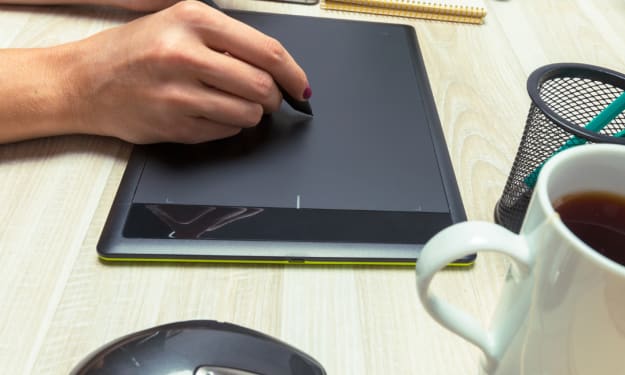Exercising creativity
Exercising creativity is an essential aspect of personal and professional growth

Exercising creativity is an essential aspect of personal and professional growth. Creativity is not just an innate talent; it can be nurtured and developed through various practices and mindsets. Engaging in creative activities can enhance problem-solving skills, foster innovation, and improve overall mental well-being. Here, we will explore several strategies and approaches to exercising creativity, the benefits of creative thinking, and how to overcome common barriers to creativity.
Strategies to Exercise Creativity
1.Engage in Diverse Activities
Creativity flourishes when we expose ourselves to a variety of experiences. Engaging in different activities, such as reading diverse genres, exploring new hobbies, traveling, or attending cultural events, can provide fresh perspectives and inspiration. This cross-pollination of ideas often leads to innovative solutions and unique concepts.
2. **Practice Brainstorming
Brainstorming is a powerful tool for generating a multitude of ideas. The key is to create an environment where all ideas are welcome without immediate judgment. This practice encourages free thinking and can often lead to unexpected and innovative solutions. Setting a time limit can also help in maintaining focus and urgency during brainstorming sessions.
3. **Embrace Failure
Fear of failure can stifle creativity. Viewing failures as learning opportunities rather than setbacks allows individuals to take risks and experiment with new ideas. This mindset shift can lead to more bold and innovative thinking. Celebrating small wins and reflecting on what didn’t work can provide valuable insights and foster a resilient creative mindset.
4.Cultivate Curiosi
Curiosity drives creativity. Asking questions, seeking out new knowledge, and remaining inquisitive about the world around us can lead to new ideas and discoveries. Encouraging a curious mindset involves constantly challenging assumptions and looking at things from different angles.
5. Set Aside Time for Creativity
Regularly dedicating time to creative pursuits can help in making creativity a habit. Whether it’s setting aside time each day for brainstorming, sketching, writing, or any other creative activity, consistency is key. This practice not only builds creative skills but also reinforces the importance of creativity in daily life.
6. Collaborate with Others
Collaboration can significantly enhance creativity by bringing together diverse viewpoints and skill sets. Working with others can spark new ideas and challenge existing ones. Constructive feedback from peers can also help in refining and improving creative outputs.
Benefits of Exercising Creativity
1. Enhanced Problem-Solving Skills
Creative thinking allows for the exploration of multiple solutions to a problem. It encourages looking beyond the obvious and considering alternative approaches. This flexibility in thinking can lead to more effective and innovative solutions in both personal and professional contexts.
2. Improved Mental Health
Engaging in creative activities has been shown to reduce stress, anxiety, and depression. It provides a sense of accomplishment and can serve as a form of self-expression. Creative pursuits offer an outlet for emotions and can be a therapeutic process.
3. Increased Productivity
Creativity can boost productivity by making tasks more engaging and enjoyable. When individuals approach their work creatively, they are often more motivated and invested in the outcomes. This can lead to higher quality work and greater satisfaction.
4. Enhanced Communication Skills
Creative expression, whether through writing, art, or other mediums, improves communication skills. It helps individuals convey complex ideas in more relatable and understandable ways. Storytelling, in particular, is a powerful tool for making connections and engaging audiences.
Overcoming Barriers to Creativity
1. Breaking Routine
Routine can be the enemy of creativity. Breaking out of habitual patterns can open up new ways of thinking. This might involve changing your work environment, trying a new approach to a familiar task, or simply taking a break to gain a fresh perspective.
2. Managing Self-Doubt
Self-doubt can hinder creative expression. Building confidence in one’s creative abilities involves taking small steps and gradually challenging oneself with more complex creative tasks. Positive reinforcement and focusing on progress rather than perfection can help mitigate self-doubt.
3. Avoiding Perfectionism
The pursuit of perfection can paralyze creativity. Accepting that not all ideas will be perfect and that the creative process is inherently messy can liberate individuals to experiment and innovate. Emphasizing progress over perfection encourages a more productive creative process.
4. Staying Open-Minded
Creativity requires an open mind and a willingness to consider unconventional ideas. Preconceived notions and biases can limit creative potential. Cultivating an open-minded approach involves actively seeking out and considering new ideas, even if they initially seem impractical or unfamiliar.
About the Creator
Enjoyed the story? Support the Creator.
Subscribe for free to receive all their stories in your feed. You could also pledge your support or give them a one-off tip, letting them know you appreciate their work.






Comments
There are no comments for this story
Be the first to respond and start the conversation.